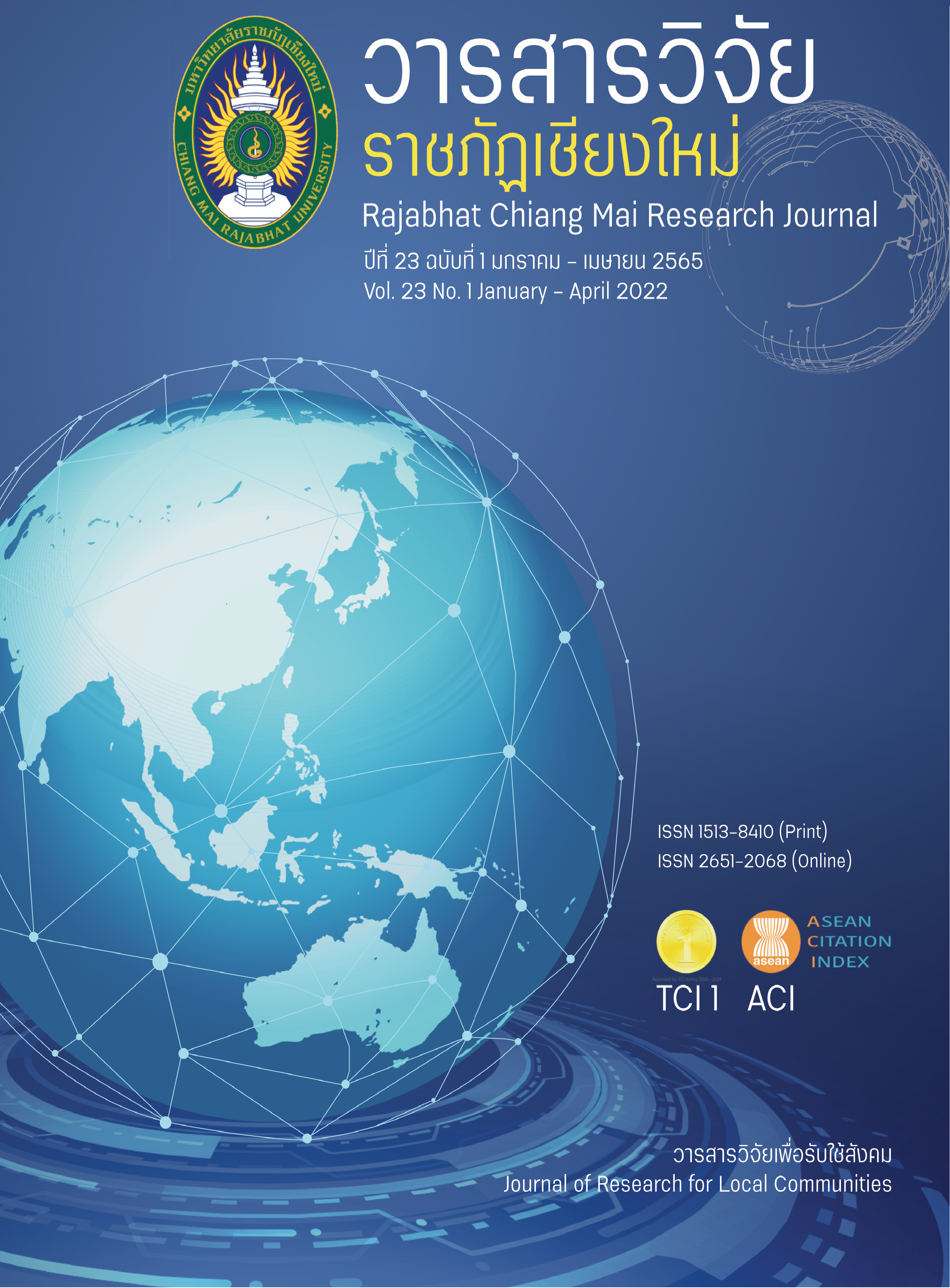Guidelines of Community Charter Formation for Mutual Land Utilization in Community Forest at Sermkhwa Sub-District, Sermngam District, Lampang Province
DOI:
https://doi.org/10.14456/rcmrj.2022.249174Keywords:
Allocation of arable land, Utilization of arable land, Sermngam District, Lampang ProvinceAbstract
The purposes of research articles are for studying and analyzing background of land utilization in community forests at Sermkhwa Sub-district, Sermngam District, Lampang Province; and for studying guidelines to form community charter for mutual land utilization in community forests at Sermkhwa Sub-district, Sermngam District, Lampang Province. The study was qualitative research by using an in-depth interview with 6 informants and a focused group of 36 participants. The obtained data were analyzed with content classification, content analysis, and triangulation. The results of the study showed that the background of land utilization in the community forests included 3 aspects: 1) environment focusing on preservation and utilization of lands in watershed areas which were water sources; 2) society by forming cooperation to manage the forests as public work concerning rites, beliefs, and learning sources of nature; and 3) economy by facilitating for household consumption. Regarding the guidelines of community charter formation for mutual land utilization in community forests; the process should involve people, central governmental sectors, and local governmental sectors. Guidelines for problem management in order to form community charter of Sermkhwa Sub-district. The charter model, rules, or mutual agreement in community should be determined with at least 6 components: Chapter 1 general chapter, Chapter 2 prevention and problem-solving, Chapter 3 structure of central forest committee, Chapter 4 implementation, Chapter 5 punishment or fines, and Chapter 6 transitory provision.
Downloads
References
Chanthathien, R. (2011). Community forest Act. Retrieved from http://www.seub.or.th/index.php?option=com_content&view=article&id=3:rataya& catid=1:2009-10-07-09-26-02&Itemid=2 (In Thai)
Community Organization Development Institute (Public Organizations). (2016). The establishment of a district constitution for self-management. Retrieved from https://web.codi.or.th/wp-content/uploads/2019/05/book-KNOW-180859.pdf (In Thai)
FAO and UNEP. (1997). Negotiating a Sustainable Future for Land, Structural and Institutional Guidelines for Land Recourse Management in the 21st Century: Rome.
Gregorio A. and Jansen L. (1998). Land Cover Classification System (LCCS): Classification Concepts and User Manual. Food and Agriculture Organization of the United Nations: Rome.
Maneein, P. (2016). Community rights on community forest management: A case study of Baan Non Tum hawon, Khun Han district, Sisaket province. (Master of Law, Thammasat University). (In Thai)
Nimpanich, J. (2007). Qualitative research in political sciences and public administration. Bangkok: Chulalongkorn University Press. (In Thai)
Powintara, N. (2015). Solution in Developing the State-Owned Land Allocation Process Effectively and Sustainably in Surat Thani Province. Academic Journal Thammasat University, 34(1), 77-101. (In Thai)
Praekthong, K. (1997). Community forest in Thailand. Bangkok: Department of Religious Affairs. (In Thai)
Puthong, D. (2018). The Community Forest Management for Sustainability Using Process of Public Participation and Loval Tradition in Northern Thailand Region. Journal of Administrative and Management, 6(2), 80 – 94. (In Thai)
Sriyai, T. (2014). People’s Participation in Community Forest Management in Surin Province. (Ph.D., Sripatum University) (In Thai)
Sukwong, S. (2000). Forest management for solving human and forest problems: situation, problem and future. Bangkok: Social Research Institute Chulalongkorn University. (In Thai)
Thakrairach, P. (2018). Management of Community Forest in the Area of Quality Class of Basin of a River of the Third Class in Sisaket Province By People’s Participation. Sisaket Rajabhat University Journal, 12(3), 108-122. (In Thai)
Downloads
Published
How to Cite
Issue
Section
License
Copyright (c) 2022 Rajabhat Chiang Mai Research Journal

This work is licensed under a Creative Commons Attribution-NonCommercial-NoDerivatives 4.0 International License.
1. Articles, information, content, images, etc published in the “Community and Social Development Journal” are copyrighted by the Community and Social Development Journal, Chiang Mai Rajabhat University. In order to properly distribute the articles through print and electronic media, the authors still hold the copyright for the published articles under the Creative Commons Attribution (CC BY) license, which allows the re-distribution of the articles in other sources. References must be made to the articles in the journal. The authors are responsible for requesting permission to reproduce copyrighted content from other sources.
2. The content of the articles appearing in the journal is the direct responsibility of the article authors. The editorial board of the journal does not necessarily agree with or share any responsibility.














